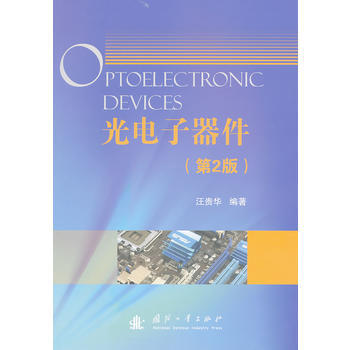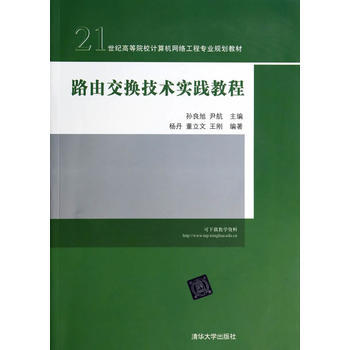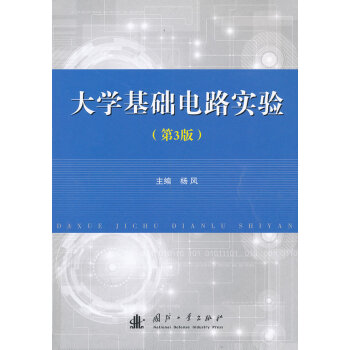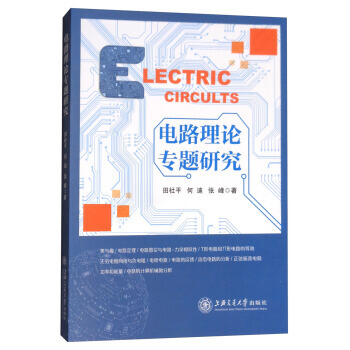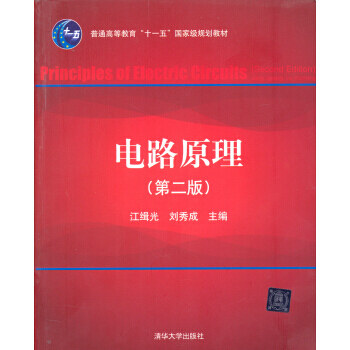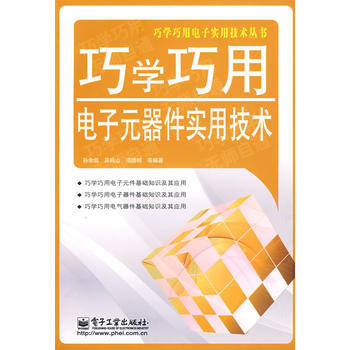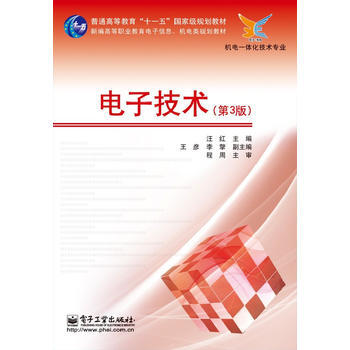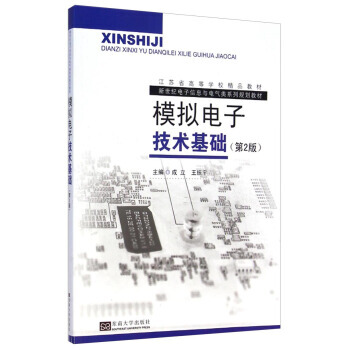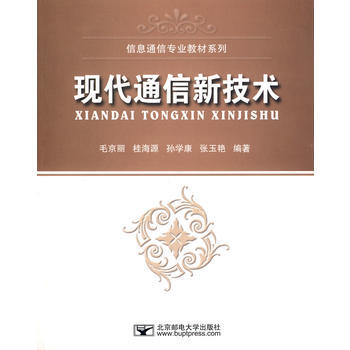

具體描述
基本信息
書名:半導體物理性能手冊 捲
定價:198.00元
作者:(日)足立貞夫
齣版社:哈爾濱工業大學齣版社
齣版日期:2014-04-01
ISBN:9787560345130
字數:
頁碼:
版次:1
裝幀:平裝
開本:16開
商品重量:0.4kg
編輯推薦
內容提要
《半導體物理性能手冊(捲)(英文版)》係Springer手冊精選原版係列。《半導體物理性能手冊(捲)(英文版)》主要包括Diamond(C)、Silicon(Si)、Germanium(C)、Gray Tin(a—Sn)、Cubic Silicon Carbide(3C—SiC)、Hexagonal Silicon Carbide(2H—,4H—,6H—SiC,etc.)、Rhombohedral Silicon Carbide(15R—,21R—,24R—SiC,etc.)等內容。
目錄
Preface
Acknowledgments
Contents of Other Volumes
1 Diamond (C)
1.1 Structural Properties
1.1.1 Ionicity
1.1.2 Elemental Isotopic Abundance and Molecular Weight
1.1.3 Crystal Structure and Space Group
1.1.4 Lattice Constant and Its Related Parameters
1.1.5 Structural Phase Transition
1.1.6 Cleavage Plane
1.2 Thermal Properties
1.2.1 Melting Point and Its Related Parameters
1.2.2 Specific Heat
1.2.3 Debye Temperature
1.2.4 Thermal Expansion Coefficient
1.2.5 Thermal Conductivity and Diffusivity
1.3 Elastic Properties
1.3.1 Elastic Constant
1.3.2 Third—Order Elastic Constant
1.3.3 Young's Modulus, Poisson's Ratio, and Similar
1.3.4 Microhardness
1.3.5 Sound Velocity
1.4 Phonons and Lattice Vibronic Properties
1.4.1 Phonon Dispersion Relation
1.4.2 Phonon Frequency
1.4.3 Mode Gruneisen Parameter
1.4.4 Phonon Deformation Potential
1.5 Collective Effects and Related Properties
1.5.1 Piezoelectric Constant
1.5.2 Frohlich Coupling Constant
1.6 Energy—Band Structure: Energy—Band Gaps
1.6.1 Basic Properties
1.6.2 E0—Gap Region
1.6.3 Higher—Lying Direct Gap
1.6.4 Lowest Indirect Gap
1.6.5 Conduction—Valley Energy Separation
1.6.6 Direct—Indirect—Gap Transition Pressure
1.7 Energy—Band Structure: Electron and Hole Effective Masses
1.7.1 Electron Effective Mass: Γ Valley
1.7.2 Electron Effective Mass: Satellite Valley
1.7.3 Hole Effective Mass
1.8 Electronic Deformation Potential
1.8.1 Intravalley Deformation Potential: Γ Point
1.8.2 Intravalley Deformation Potential: High—Symmetry Points
1.8.3 Intervalley Deformation Potential
1.9 Electron Affinity and Schottky Barrier Height
1.9.1 Electron Affinity
1.9.2 Schottky Barrier Height
1.10 Optical Properties
1.10.1 Summary of Optical Dispersion Relations
1.10.2 The Reststrahlen Region
1.10.3 At or Near the Fundamental Absorption Edge
1.10.4 The Interband Transition Region
1.10.5 Free—Carrier Absorption and Related Phenomena
1.11 Elastooptic, Electrooptic, and Nonlinear Optical Properties
1.11.1 Elastooptic Effect
1.11.2 Linear Electrooptic Constant
1.11.3 Quadratic Electrooptic Constant
1.11.4 Franz—Keldysh Effect
1.11.5 Nonlinear Optical Constant
1.12 Carrier Transport Properties
1.12.1 Low—Field Mobility: Electrons
1.12.2 Low—Field Mobility: Holes
1.12.3 High—Field Transport: Electrons
1.12.4 High—Field Transport: Holes
1.12.5 Minority—Carrier Transport: Electrons in ρ—Type Materials
1.12.6 Minority—Carrier Transport: Holes in n—Type Materials
1.12.7 Impact Ionization Coefficient
2 Silicon (Si)
2.1 Structural Properties
2.1.1 Ionicity
2.1.2 Elemental Isotopic Abundance and Molecular Weight
2.1.3 Crystal Structure and Space Group
2.1.4 Lattice Constant and Its Related Parameters
2.1.5 Structural Phase Transition
2.1.6 Cleavage Plane
2.2 Thermal Properties
2.2.1 Melting Point and Its Related Parameters
2.2.2 Specific Heat
2.2.3 Debye Temperature
2.2.4 Thermal Expansion Coefficient
2.2.5 Thermal Conductivity and Diffusivity
2.3 Elastic Properties
2.3.1 Elastic Constant
2.3.2 Third—Order Elastic Constant
2.3.3 Young's Modulus, Poisson's Ratio, and Similar
2.3.4 Microhardness
2.3.5 Sound Velocity
2.4 Phonons and Lattice Vibronic Properties
2.4.1 Phonon Dispersion Relation
2.4.2 Phonon Frequency
2.4.3 Mode Gruneisen Parameter
2.4.4 Phonon Deformation Potential
2.5 Collective Effects and Related Properties
2.5.1 Piezoelectric Constant
2.5.2 Frohlich Coupling Constant
2.6 Energy—Band Structure: Energy—Band Gaps
2.6.1 Basic Properties
2.6.2 E0—Gap Region
2.6.3 Higher—Lying Direct Gap
2.6.4 Lowest Indirect Gap
2.6.5 Conduction—Valley Energy Separation
2.6.6 Direct—Indirect—Gap Transition Pressure
2.7 Energy—Band Structure: Electron and Hole Effective Masses
2.7.1 Electron Effective Mass: Γ Valley
2.7.2 Electron Effective Mass: Satellite Valley
2.7.3 Hole Effective Mass
2.8 Electronic Deformation Potential
2.8.1 Intravalley Deformation Potential: Γ Point
2.8.2 Intravalley Deformation Potential: High—Symmetry Points
2.8.3 Intervalley Deformation Potential
2.9 Electron Affinity and Schottky Barrier Height
2.9.1 Electron Affinity
2.9.2 Schottky Barrier Height
2.10 Optical Properties
2.10.1 Summary of Optical Dispersion Relations
2.10.2 The Reststrahlen Region
2.10.3 At or Near the Fundamental Absorption Edge
2.10.4 The Interband Transition Region
2.10.5 Free—Carrier Absorption and Related Phenomena
2.11 Elastooptic, Electrooptic, and Nonlinear Optical Properties
2.11.1 Elastooptic Effect
2.11.2 Linear Electrooptic Constant
2.11.3 Quadratic Electrooptic Constant
2.11.4 Franz—Keldysh Effect
2.11.5 Nonlinear Optical Constant
2.12 Carrier Transport Properties
2.12.1 Low—Field Mobility: Electrons
2.12.2 Low—Field Mobility: Holes
2.12.3 High—Field Transport: Electrons
2.12.4 High—Field Transport: Holes
2.12.5 Minority—Carrier Transport: Electrons in p—Type Materials
2.12.6 Minority—Carrier Transport: Holes in n—Type Materials
2.12.7 Impact Ionization Coefficient
3 Germanium (C)
3.1 Structural Properties
3.1.1 Ionicity
3.1.2 Elemental Isotopic Abundance and Molecular Weight
3.1.3 Crystal Structure and Space Group
3.1.4 Lattice Constant and Its Related Parameters
3.1.5 Structural Phase Transition
3.1.6 Cleavage Plane
3.2 Thermal Properties
3.2.1 Melting Point and Its Related Parameters
3.2.2 Specific Heat
3.2.3 Debye Temperature
3.2.4 Thermal Expansion Coefficient
3.2.5 Thermal Conductivity and Diffusivity
3.3 Elastic Properties
3.3,1 Elastic Constant
3.3.2 Third—Order Elastic Constant
3.3.3 Young's Modulus, Poisson's Ratio, and Similar
3.3.4 Microhardness
3.3.5 Sound Velocity
3.4 Phonons and Lattice Vibronic Properties
3.4.1 Phonon Dispersion Relation
3.4.2 Phonon Frequency
3.4.3 Mode Gruneisen Parameter
3.4.4 Phonon Deformation Potential
3.5 Collective Effects and Related Properties
3.5.1 Piezoelectric Constant
3.5.2 Frohlich Coupling Constant
3.6 Energy—Band Structure: Energy—Band Gaps
3.6.1 Basic Properties
3.6.2 Eo—Gap Region
3.6.3 Higher—Lying Direct Gap
3.6.4 Lowest Indirect Gap
3.6.5 Conduction—Valley Energy Separation
3.6.6 Direct—Indirect—Gap Transition Pressure
3.7 Energy—Band Structure: Electron and Hole Effective Masses
3.7.1 Electron Effective Mass: F Valiey
3.7.2 Electron Effective Mass: Satellite Valley
3.7.3 Hole Effective Mass
3.8 Electronic Deformation Potential
3.8.1 Intravalley Deformation Potential: Γ Point
3.8.2 Intravalley Deformation Potential: High—Symmetry Points
3.8.3 Intervalley Deformation Potential
3.9 Electron Affinity and Schottky Barrier Height
3.9.1 Electron Affinity
3.9.2 Schottky Barrier Height
3.10 Optical Properties
3.10.1 Summary of Optical Dispersion Relations
3.10.2 The Reststrahlen Region
3.10.3 At or Near the Fundamental Absorption Edge
3.10.4 The Interband Transition Region
3.10.5 Free—Carrier Absorption and Related Phenomena
3.11 Elastooptic, Electrooptic, and Nonlinear Optical Properties
3.11.1 Elastooptic Effect
3.11.2 Linear Electrooptic Constant
3.11.3 Quadratic Electrooptic Constant
3.11.4 Franz—Keldysh Effect
3.11.5 Nonlinear Optical Constant
3.12 Carrier Transport Properties
3.12.1 Low—Field Mobility: Electrons
3.12.2 Low—Field Mobility: Holes
3.12.3 High—Field Transport: Electrons
3.12.4 High—Field Transport: Holes
3.12.5 Minority—Carrier Transport: Electrons in p—Type Materials
3.12.6 Minority—Carrier Transport: Holes in n—Type Materials
3.12.7 Impact Ionization Coefficient
4 Gray Tin (a—Sn)
4.1 Structural Properties
4.1.1 lonicity
4.1.2 Elemental Isotopic Abundance and Molecular Weight
4.1.3 Crystal Structure and Space Group
4.1.4 Lattice Constant and Its Related Parameters
4.1.5 Structural Phase Transition
4.1.6 Cleavage Plane
4.2 Thermal Properties
4.2.1 Melting Point and Its Related Parameters
4.2.2 Specific Heat
4.2.3 Debye Temperature
4.2.4 Thermal Expansion Coefficient
4.2.5 Thermal Conductivity and Diffusivity
4.3 Elastic Properties
4.3.1 Elastic Constant
4.3.2 Third—Order Elastic Constant
4.3.3 Young's Modulus, Poisson's Ratio, and Similar
4.3.4 Microhardness
4.3.5 Sound Velocity
4.4 Phonons and Lattice Vibronic Properties
4.4.1 Phonon Dispersion Relation
4.4.2 Phonon Frequency
4.4.3 Mode Gruneisen Parameter
4.4.4 Phonon Deformation Potential
4.5 Collective Effects and Related Properties
4.5.1 Piezoelectric Constant
4.5.2 Frohlich Coupling Constant
4.6 Energy—Band Structure: Energy—Band Gaps
4.6.1 Basic Properties
4.6.2 Eo—Gap Region
4.6.3 Higher—Lying Direct Gap
4.6.4 Lowest Indirect Gap
4.6.5 Conduction—Valley Energy Separation
4.6.6 Direct—Indirect—Gap Transition Pressure
4.7 Energy—Band Structure: Electron and Hole Effective Masses
4.7.1 Electron Effective Mass: Γ Valley
4.7.2 Electron Effective Mass: Satellite Valley
4.7.3 Hole Effective Mass
4.8 Electronic Deformation Potential
4.8.1 Intravalley Deformation Potential: Γ Point
4.8.2 Intravalley Deformation Potential: High—Symmetry Points
4.8.3 Intervalley Deformation Potential
4.9 Electron Affinity and Schottky Barrier Height
4.9.1 Electron Affinity
4.9.2 Schottky Barrier Height
4.10 Optical Properties
4.10.1 Summary of Optical Dispersion Relations
4.10.2 The Reststrahlen Region
4.10.3 At or Near the Fundamental Absorption Edge
4.10.4 The Interband Transition Region
4.10.5 Free—Carrier Absorption and Related Phenomena
4.11 Elastooptic, Electrooptic, and Nonlinear Optical Properties
4.11.1 Elastooptic Effect
4.11.2 Linear Electrooptic Constant
4.11.3 Quadratic Electrooptic Constant
4.11.4 Franz—Keldysh Effect
4.11.5 Nonlinear Optical Constant
4.12 Carrier Transport Properties
4.12.1 Low—Field Mobility: Electrons
4.12.2 Low—Field Mobility: Holes
4.12.3 High—Field Transport: Electrons
4.12.4 High—Field Transport: Holes
4.12.5 Minority—Carrier Transport: Electrons in p—Type Materials
4.12.6 Minority—Carrier Transport: Holes in n—Type Materials
4.12.7 Impact Ionization Coefficient
……
5 Cubic Silicon Carbide (3C—SiC)
6 Hexagonal Silicon Carbide (2H—, 4H—, 6H—SiC, etc.)
7 Rhombohedral Silicon Carbide (15R—, 21R—, 24R—SiC, etc.)
作者介紹
文摘
序言
用戶評價
評分這本書的封麵設計簡直是一場視覺的盛宴,色彩搭配得恰到好處,那種深邃的藍色調,混閤著一些科技感的綫條和光斑,讓人一眼就能感受到它蘊含的專業性。我特彆喜歡封麵上那種略帶磨砂質感的處理,拿在手裏沉甸甸的,很有分量感,這讓我對裏麵的內容充滿瞭期待。裝幀質量也是一流的,紙張的厚度和光潔度都非常適中,印刷清晰銳利,即便是復雜的圖錶和公式,看起來也毫無壓力。我已經翻閱瞭前幾頁的目錄和前言,那種嚴謹的學術態度撲麵而來,能感受到作者在組織結構上的匠心獨運,每一個章節的邏輯銜接都仿佛經過瞭韆錘百煉,旨在為讀者構建一個紮實且無懈可擊的知識體係。對於我們這種需要頻繁查閱權威資料的研究人員來說,一本實體書的物理質感和排版帶來的閱讀體驗,是任何電子文檔都無法替代的,它不僅僅是一本工具書,更像是一件值得珍藏的藝術品。
評分初讀這本書的章節安排,我立刻被它那近乎苛刻的係統性所摺服。它並沒有急於展示那些光怪陸離的前沿技術,而是選擇從最基礎的晶體結構和電子能帶理論入手,層層遞進,如同在攀登一座知識的高塔。這種循序漸進的教學方式,對於那些希望真正掌握半導體領域“內功心法”的讀者來說,簡直是福音。特彆是其中對各種復雜物理現象的描述,作者似乎總能找到一個最直觀、最貼近物理本質的角度去闡釋,避免瞭過多晦澀難懂的數學推導堆砌,這一點非常難得。我個人尤其欣賞作者在引入新概念時所采用的類比手法,比如對載流子遷移率的解釋,那種將抽象概念具象化的能力,極大地降低瞭學習麯綫,讓我這個非科班齣身的工程師也能很快抓住核心要領。這本書更像是請瞭一位經驗極其豐富的大師在你耳邊耐心講解,而不是冷冰冰地丟給你一堆數據。
評分作為一個長期在項目一綫摸爬滾打的工程師,我發現這本書的實用性遠超我的預期。它不僅僅是一本理論參考書,更像是一本高級的“故障排除指南”。在描述完材料特性之後,緊接著的章節往往會深入到實際器件工作中的關鍵瓶頸和限製因素。比如,當討論到MOSFET的閾值電壓不理想時,書中會立刻引導讀者迴顧材料摻雜的均勻性、界麵態密度以及柵氧的缺陷這些實際製造中極易齣現問題的環節。這種將理論與工程實踐緊密結閤的寫作風格,使得這本書的每一頁都充滿瞭解決實際問題的智慧。它不像某些學術著作那樣高懸於理論的雲端,而是牢牢地紮根於半導體工藝的現實土壤之中,讓我感覺手中的這本書,隨時都能指導我解決生産綫上遇到的棘手難題。
評分這本書的細節處理上,體現齣瞭齣版方和作者對於專業讀者的深刻理解。我注意到,在涉及關鍵參數和實驗數據的部分,作者非常慷慨地提供瞭大量的圖錶和原始數據來源的引用,這極大地增強瞭內容的可靠性和可驗證性。很多其他手冊級彆的書籍往往隻是給齣結論,而這本書卻緻力於展示“如何得齣這個結論”的過程。隨便翻開一頁,裏麵關於半導體材料在不同溫度和電場強度下的響應麯綫,繪製得細緻入微,標注詳盡,即便是最微小的變化趨勢也被清晰地捕捉並呈現在讀者麵前。這種對數據準確性的執著,讓我對書中所有結論都深信不疑。對於需要進行精確器件建模和仿真工作的人來說,這種詳盡的數據支持簡直是如虎添翼,省去瞭我們大量自己去擬閤或推算的時間,可以直接將這些經過驗證的數據整閤到自己的工作中去。
評分這本書的整體閱讀體驗,給我帶來瞭一種久違的“學術的深度感”。在現今這個信息碎片化的時代,我們很少能接觸到如此結構完整、內容詳實的係統性著作。作者在組織材料時,不僅關注瞭橫嚮的廣度——涵蓋瞭從基礎半導體到器件物理的各個層麵,更注重瞭縱嚮的深度——對每一個核心概念都進行瞭多角度、多層次的剖析。讀完一章,我總有一種意猶未盡的感覺,不是因為內容不足,而是因為作者引導我看到瞭更深層次的問題和未來的研究方嚮。這種啓發性,是任何網絡搜索或速查手冊都無法比擬的。它不僅告訴我“是什麼”,更重要的是,它教會瞭我“為什麼是這樣”,從而真正提升瞭我對整個半導體領域的底層認知框架。
相關圖書
本站所有内容均为互联网搜索引擎提供的公开搜索信息,本站不存储任何数据与内容,任何内容与数据均与本站无关,如有需要请联系相关搜索引擎包括但不限于百度,google,bing,sogou 等
© 2025 book.tinynews.org All Rights Reserved. 静思书屋 版权所有

